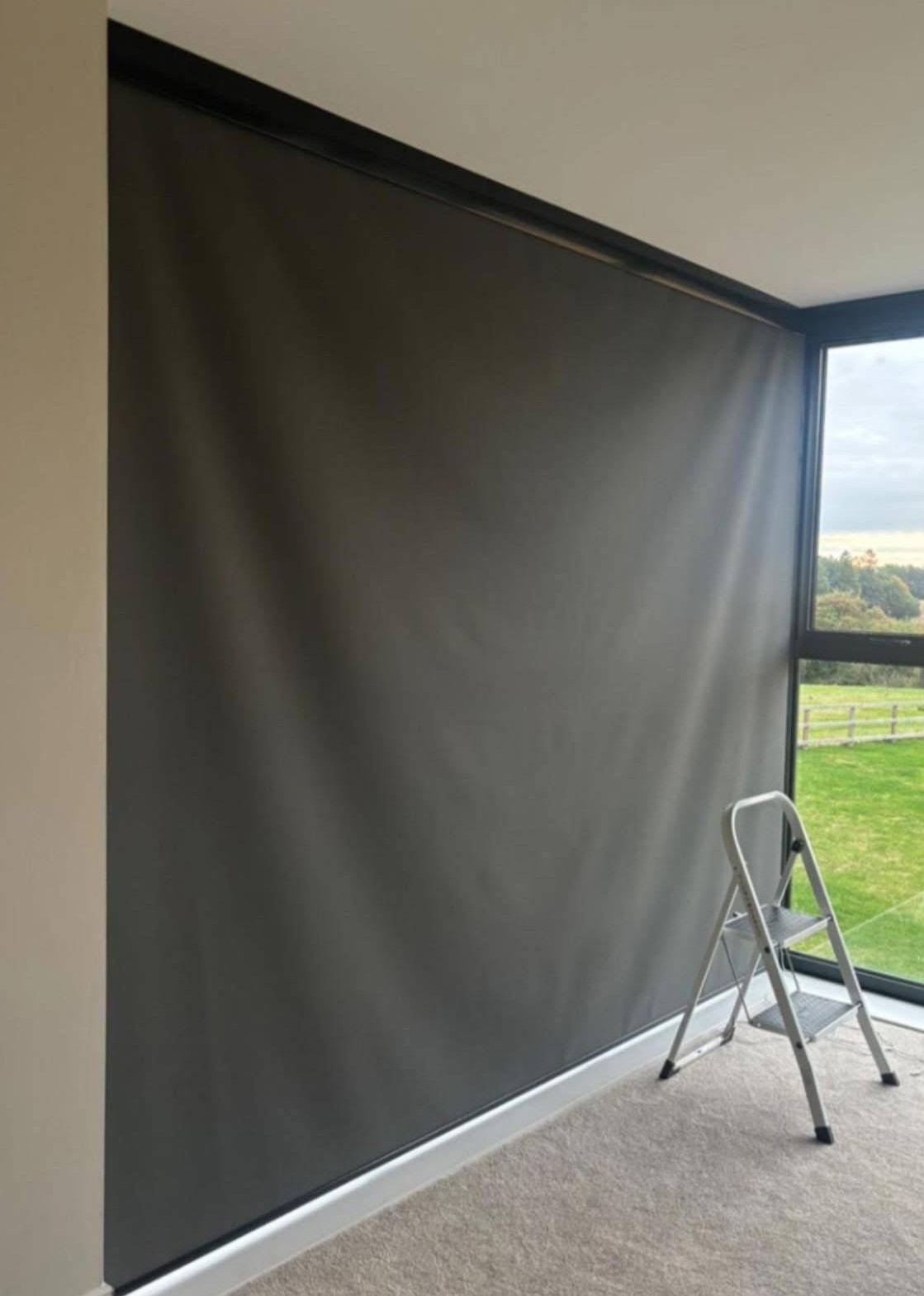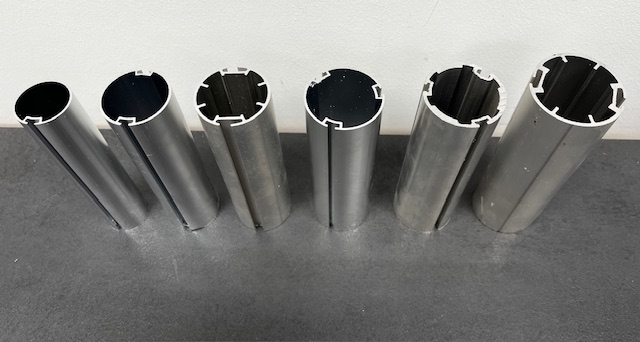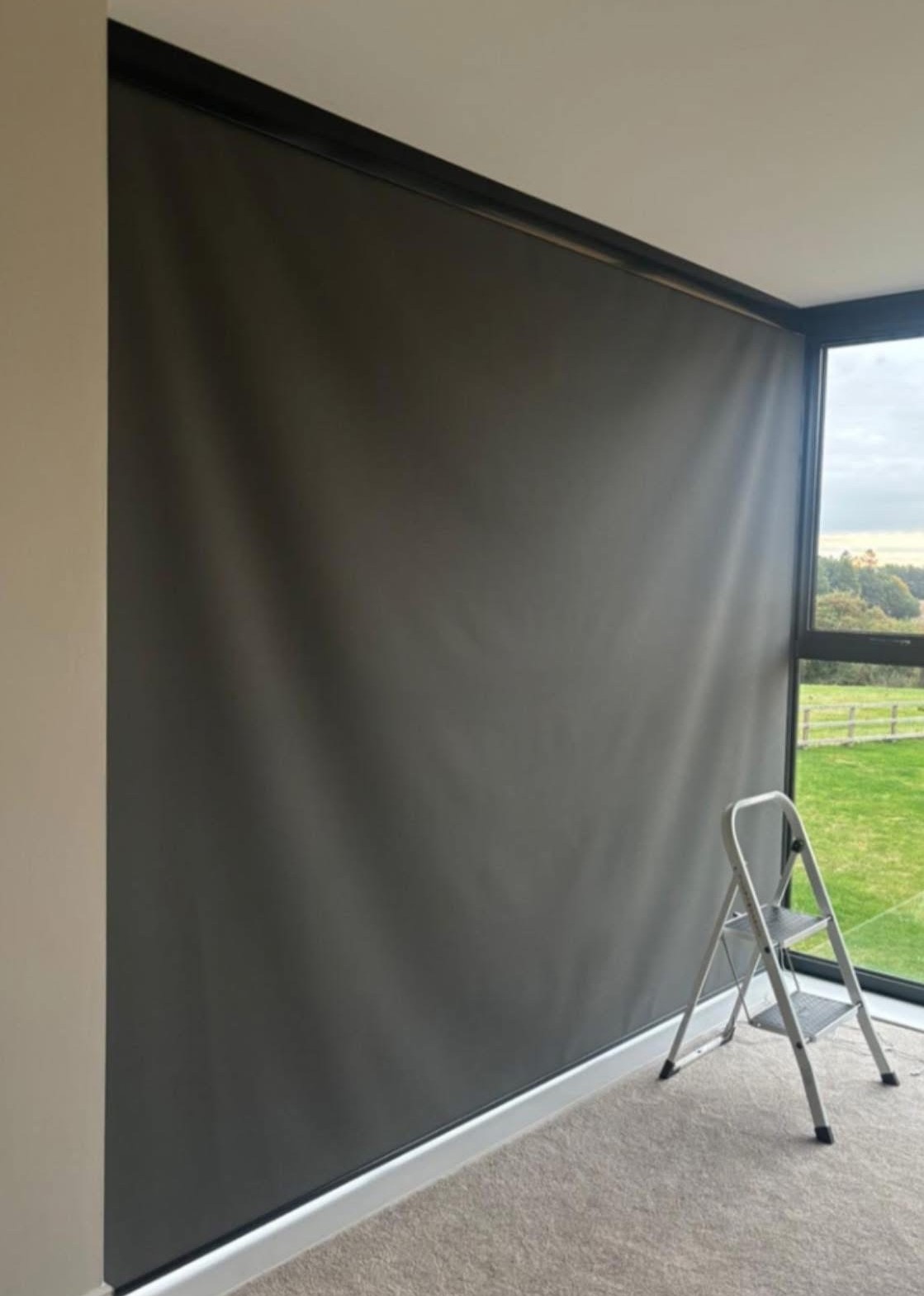Roller blinds seem simple enough, right?
One sheet of fabric. A barrel. A chain. Done.
But if you’ve ever had blinds that started rippling or stopped rolling smoothly, you know they’re not so simple after all.
A few weeks ago, I visited a home where the owner just had wide, floor-to-ceiling roller blinds installed and need a second opinion as she wasn’t too happy. They looked stunning until she noticed strange waves in the fabric. “Is this normal?” she asked.

It wasn’t.
And the problem wasn’t the fabric. It was something most people never see: the barrel
behind it.
The Barrel: The Hidden Backbone of Every Roller Blind
Every roller blind rolls around a barrel, basically, a tube. But here’s what most companies won’t tell you:
That tube is make-or-break.
Its diameter, strength, and material determine whether your blind hangs beautifully… or starts to sag and ripple.
Here’s what we look at when we build your blind:
1. Width
The wider the blind, the more pressure the barrel has to handle. If it’s not strong enough, it bows in the middle and just a few millimetres of deflection can ripple the entire fabric.
2. Drop (Height)
Longer blinds = more rolled-up fabric. You need a barrel big enough to handle that bulk, or the mechanism strains and eventually breaks. Also with a larger barrel the fabric rolls up much quicker with less effort.
3. Fabric Weight
Blackout fabrics, thermal layers, or specialist materials are heavy. A cheap 25mm barrel can’t take that weight and the blind starts dragging, jamming, or failing early.
Why Ours Last
At Barlow Blinds, we never guess. We choose from six barrel diameters from 32mm to 65mm based on three things:
- the width
- the drop
- and the fabric weight
We’ve seen what happens when companies cut corners, blinds that fail after a year, customers stuck with repairs, and living rooms that don’t look the way they should.
| |
So we made a decision:
We won’t use the cheapest option. We’ll use the right one.
Because this isn’t about fitting as many blinds as we can.
It’s about making the ones we do fit last.
Suggested FAQs
Q: Why do roller blinds ripple?
Rippling is usually caused by barrel deflection. If the barrel is too small for the width, weight, or drop of the blind, it can bow in the centre and make the fabric crease or ripple.
Q: What barrel size should roller blinds have?
It depends on the width, drop, and fabric weight. At Barlow Blinds, we use six different diameters (32mm–65mm) to make sure every blind works smoothly and lasts longer.
Q: Are bigger barrels always better for roller blinds?
Not always — the right barrel is the one that balances width, fabric weight, and drop. Too small, and the blind may ripple or strain; too big without need, and it can be bulky.
Q: Why are cheap roller blinds less reliable?
Cheaper blinds often use small 25mm barrels to keep costs down. These struggle with wide or heavy blinds, which leads to rippling, harder operation, and shorter lifespan.
Q: How do I make my roller blinds last longer?
Choose blinds made with the right barrel size for the window. This ensures smooth rolling, less strain on the fabric, and years of reliable use.

About Phil Coleman
Phil Coleman is the fifth generation of his family to run Barlow Blinds, a Leicester business that has been making blinds since 1887. With over 30 years of hands-on experience, Phil has played a leading role in shaping industry standards including being part of the team that wrote the only NVQ qualification for blind and shutter installers. He also serves on the Management Committee of the British Blind & Shutter Association (BBSA), helping to set best practice across the trade. Under his leadership, Barlow Blinds has remained true to its founding principle: “It’s not our job to find customers for our blinds, it’s our job to find the right blinds for our customers.”



